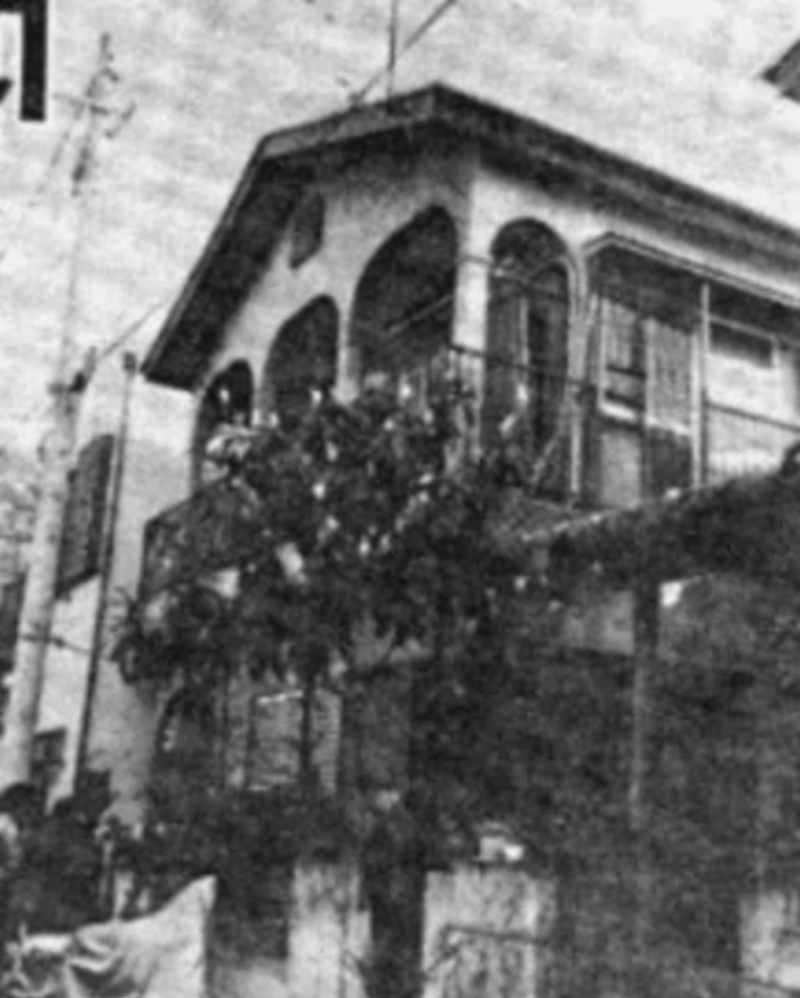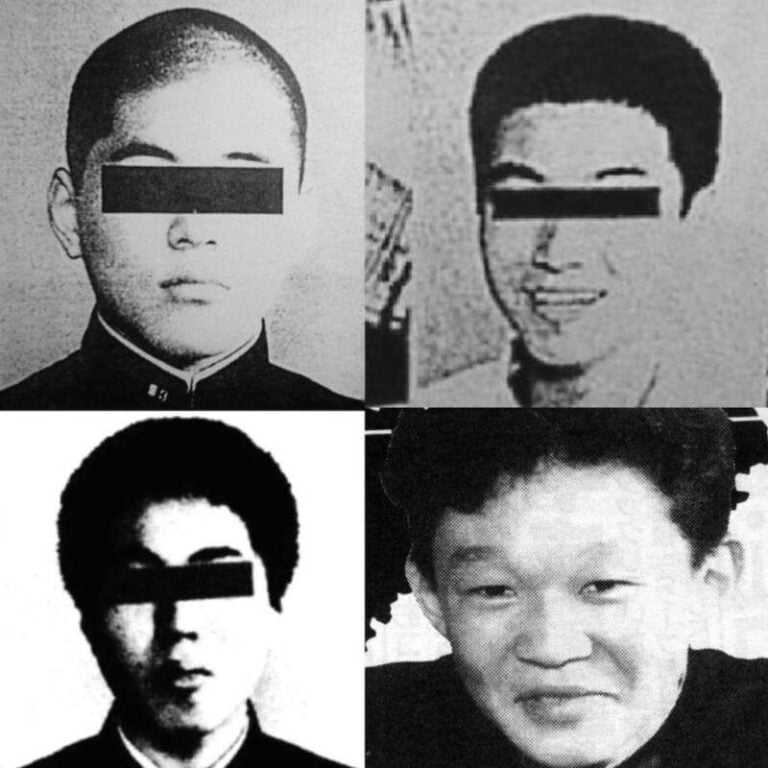Junko Furuta Murder Case: A Dark Chapter In Japan's History
The Junko Furuta murder case remains one of the most chilling and disturbing crimes in Japanese history. This tragic event shocked the nation and highlighted serious issues regarding youth violence, bullying, and the justice system. The case continues to resonate with people worldwide due to its brutal nature and long-lasting impact on society.
On November 25, 1988, 14-year-old schoolgirl Junko Furuta's life was tragically cut short after she became a victim of an unimaginable crime. Her abduction, torture, and eventual murder by four teenage boys sent shockwaves through Japan and beyond. The case remains one of the most infamous in Japanese criminal history, sparking debates about juvenile crime and punishment.
This article delves deep into the details of the Junko Furuta murder case, exploring the events leading up to the crime, the perpetrators' actions, the legal proceedings, and the lasting impact on Japanese society. We'll also examine how this case influenced changes in Japan's juvenile justice system and why it continues to be a topic of discussion today.
Read also:Bullet Train Tangerine The Ultimate Guide To This Iconic Fruit
Table of Contents
- Biography of Junko Furuta
- Overview of the Junko Furuta Murder Case
- The Perpetrators
- Key Events of the Crime
- The Investigation Process
- Legal Proceedings and Sentencing
- Impact on Japanese Society
- Changes in the Japanese Justice System
- Memorial and Remembrance
- Conclusion
Biography of Junko Furuta
Early Life and Education
Junko Furuta was born on May 3, 1974, in Osaka, Japan. She grew up in a modest household with her parents and younger sister. Junko attended Taisei Junior High School, where she was known for her friendly nature and academic diligence. Her classmates described her as a bright and cheerful student who enjoyed school life.
Data and Biodata
| Full Name | Junko Furuta |
|---|---|
| Date of Birth | May 3, 1974 |
| Place of Birth | Osaka, Japan |
| Age at Death | 14 years old |
| School Attended | Taisei Junior High School |
Junko's life was tragically cut short at the tender age of 14, leaving her family and friends devastated. Her story serves as a reminder of the importance of safety and the need for effective measures to prevent such tragedies.
Overview of the Junko Furuta Murder Case
The Junko Furuta murder case began on November 25, 1988, when the young girl was abducted after attending an evening cram school session. The four teenage perpetrators held her captive for 44 days, subjecting her to unimaginable torture before ultimately taking her life. The case shocked the nation and brought attention to issues surrounding juvenile crime and the limitations of Japan's justice system.
The Perpetrators
The four teenage boys responsible for the crime were aged between 14 and 16 at the time. Their identities were withheld due to their juvenile status, but they became known in the media as K, T, Y, and S. The ringleader, K, was particularly notorious for his leadership role in the crime.
Backgrounds of the Perpetrators
- K (Ringleader): The mastermind behind the crime, K had a history of bullying and antisocial behavior.
- T: A follower who participated in the crime under K's influence.
- Y: Another accomplice who played a significant role in the abduction and torture.
- S: The youngest of the group, who was less directly involved but still complicit in the crime.
Psychological evaluations revealed that the boys exhibited signs of severe behavioral issues, which were not adequately addressed by the education and juvenile justice systems at the time.
Key Events of the Crime
The crime unfolded over a period of 44 days, during which Junko Furuta endured horrific abuse at the hands of her captors. The perpetrators held her captive in an abandoned building, where they subjected her to physical and psychological torture. The details of the crime are too graphic to describe in full, but the case remains one of the most brutal in modern history.
Read also:Courtney Smith Actress A Rising Star In The Entertainment Industry
Timeline of Events
- November 25, 1988: Junko Furuta is abducted after leaving cram school.
- December 9, 1988: The perpetrators begin documenting their crimes through photographs and written accounts.
- January 4, 1989: Junko Furuta dies after 44 days of captivity and torture.
- January 5, 1989: The perpetrators dispose of Junko's body in a river.
The crime's duration and the level of brutality shocked the nation and led to widespread outrage and calls for justice.
The Investigation Process
The investigation into Junko Furuta's disappearance and murder began immediately after her family reported her missing. Police efforts were initially hampered by the lack of evidence and the perpetrators' efforts to cover their tracks. However, a breakthrough occurred when one of the boys' families discovered incriminating evidence and alerted authorities.
Key Evidence
- Photographs documenting the crime.
- Written accounts detailing the perpetrators' actions.
- Physical evidence linking the boys to the crime scene.
The investigation ultimately led to the arrest of all four perpetrators, who were subsequently tried as juveniles under Japan's legal system.
Legal Proceedings and Sentencing
The legal proceedings surrounding the Junko Furuta murder case were highly controversial, primarily due to the perpetrators' juvenile status. Under Japanese law at the time, juveniles could not be tried as adults, leading to lenient sentences that sparked public outrage.
Sentencing Outcomes
- K (Ringleader): Sentenced to 15 years in juvenile detention.
- T: Sentenced to 12 years in juvenile detention.
- Y: Sentenced to 10 years in juvenile detention.
- S: Sentenced to 8 years in juvenile detention.
The sentences were widely criticized as inadequate given the severity of the crime. The case highlighted the need for reform in Japan's juvenile justice system.
Impact on Japanese Society
The Junko Furuta murder case had a profound impact on Japanese society, sparking widespread debates about juvenile crime, bullying, and the justice system. The case led to increased awareness of the dangers faced by young people and the need for better protection measures.
Social Repercussions
- Increased focus on bullying prevention in schools.
- Debate over the age of criminal responsibility in Japan.
- Public demand for stricter penalties for juvenile offenders.
The case also prompted calls for greater transparency in the juvenile justice system and more effective measures to address behavioral issues in young people.
Changes in the Japanese Justice System
In response to the Junko Furuta murder case and other high-profile juvenile crimes, the Japanese government implemented several reforms to address shortcomings in the justice system. These changes aimed to improve the handling of juvenile offenders and provide more effective deterrence against serious crimes.
Key Reforms
- Lowering the age of criminal responsibility for serious crimes.
- Introducing harsher penalties for violent juvenile offenders.
- Enhancing support services for victims and their families.
These reforms reflect a growing recognition of the need for balance between rehabilitation and accountability in the juvenile justice system.
Memorial and Remembrance
Junko Furuta's memory is honored through various memorials and remembrance activities in Japan. Her family and supporters have worked to keep her story alive as a reminder of the importance of safety and justice for all young people.
Annual Remembrance Events
Every year on the anniversary of her death, ceremonies are held to honor Junko Furuta's memory and raise awareness about issues related to juvenile crime and victim support. These events serve as a powerful reminder of the need for vigilance and action to prevent such tragedies in the future.
Conclusion
The Junko Furuta murder case remains one of the most disturbing and impactful crimes in Japanese history. The brutal nature of the crime and the lenient sentences handed down to the perpetrators sparked widespread outrage and led to significant changes in Japan's justice system. The case serves as a powerful reminder of the importance of addressing issues related to juvenile crime, bullying, and victim support.
We encourage readers to reflect on the lessons learned from this tragic event and consider how they can contribute to creating safer communities for all young people. Please share this article with others and explore related topics to deepen your understanding of the issues at hand. Together, we can work towards a future where such tragedies are prevented.
Data and information in this article are sourced from reputable publications, including reports from Japanese law enforcement and media outlets. For further reading, consider exploring academic studies and documentaries related to the Junko Furuta murder case and its impact on Japanese society.
Who Is Emma Stone's Husband? A Comprehensive Guide To Her Personal Life
G Herbo Height And Weight: A Comprehensive Guide
Scotty McCreery Net Worth: A Comprehensive Look At His Wealth And Career


